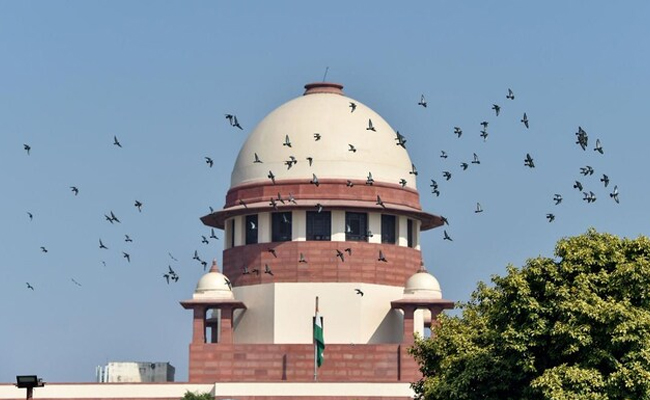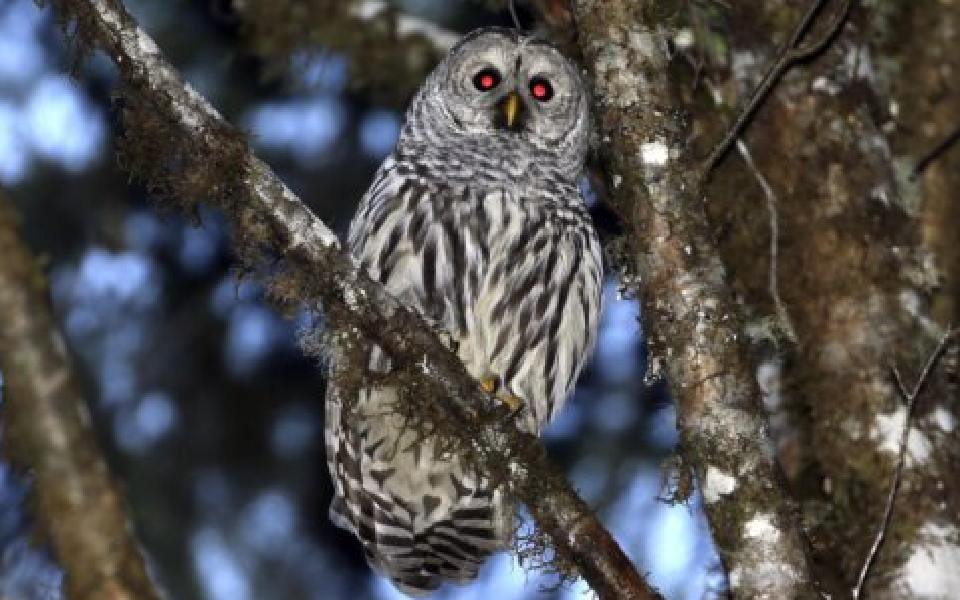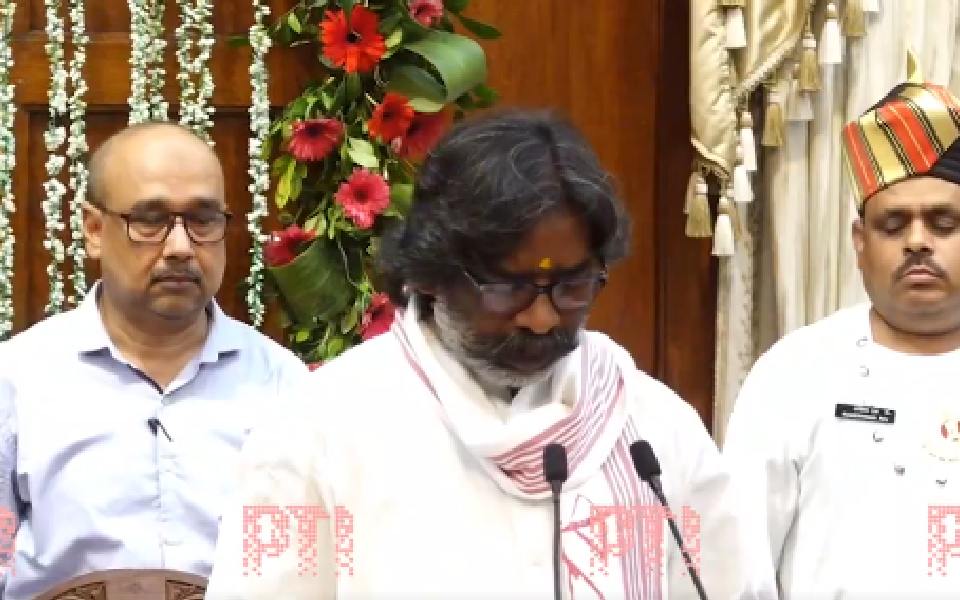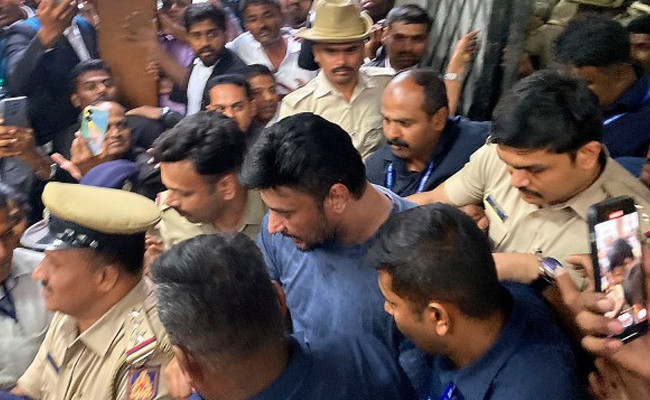New Delhi (PTI): The Supreme Court is scheduled to hear on July 8 a batch of pleas related to the controversy-ridden NEET-UG, including those alleging irregularities in the examination held on May 5 and seeking a direction that it be held afresh.
According to the cause list for July 8 uploaded on the apex court's website, the batch of 26 petitions would come up for hearing before a bench comprising Chief Justice D Y Chandrachud and Justices J B Pardiwala and Manoj Misra.
The National Eligibility-cum-Entrance Test-Undergraduate (NEET-UG) is conducted by the National Testing Agency (NTA) for admissions to MBBS, BDS, AYUSH and other related courses in government and private institutions across the country.
The NEET-UG, 2024 was held across 4,750 centres on May 5 and around 24 lakh candidates appeared in it.
Initially expected on June 14, the results were announced on June 4 due to an early completion of answer-sheet evaluation.
Allegations of irregularities, including paper leaks, have led to protests in several cities and sparring between rival political parties.
On June 11, hearing a plea seeking that the exam be held afresh on the grounds of alleged question paper leak and other malpractices, the top court observed that the sanctity of the NEET-UG has been affected and sought responses from the Centre and the NTA on the petition.
It, however, refused to stay the counselling of the successful candidates for admissions to MBBS, BDS and other courses.
On June 20, the top court sought the responses of the Centre, the NTA and others on a slew of petitions, including those seeking the scrapping of the NEET-UG and a court-monitored probe amid a mounting outrage over the alleged irregularities in the conduct of the all-India medical entrance test.
Hearing separate pleas on the exam on June 18, the apex court said even if there was "0.001 per cent negligence" on the part of anyone in the conduct of the examination, it should be thoroughly dealt with.
The Centre and the NTA had, on June 13, told the court that they had cancelled the grace marks awarded to 1,563 candidates.
They were given the option to either take a re-test or forgo the compensatory marks awarded for loss of time.
The NTA announced the revised rank list on Monday after issuing the results of the re-test held on June 23.
A total of 67 students had scored a perfect 720, unprecedented in the NTA's history, with six from a Haryana centre figuring in the list, raising suspicions about irregularities in the examination held on May 5. It has been alleged that grace marks contributed to 67 students sharing the top rank.
The number of candidates sharing the top rank in the NEET-UG reduced to 61 from 67 as the NTA announced the revised results on Monday.
Let the Truth be known. If you read VB and like VB, please be a VB Supporter and Help us deliver the Truth to one and all.
To save the imperiled spotted owl from potential extinction, US wildlife officials are embracing a contentious plan to deploy trained shooters into dense West Coast forests to kill almost a half-million barred owls that are crowding out their cousins.
The US Fish and Wildlife Service strategy released Wednesday is meant to prop up declining spotted owl populations in Oregon, Washington state and California. The Associated Press obtained details in advance.
Documents released by the agency show up to about 450,000 barred owls would be shot over three decades after the birds from the eastern US encroached into the West Coast territory of two owls: northern spotted owls and California spotted owls. The smaller spotted owls have been unable to compete with the invaders, which have large broods and need less room to survive than spotted owls.
Past efforts to save spotted owls focused on protecting the forests where they live, sparking bitter fights over logging but also helping slow the birds’ decline. The proliferation of barred owls in recent years is undermining that earlier work, officials said.
“Without actively managing barred owls, northern spotted owls will likely go extinct in all or the majority of their range, despite decades of collaborative conservation efforts,” said Kessina Lee, the Oregon state supervisor for the US Fish and Wildlife Service.
The notion of killing one bird species to save another has divided wildlife advocates and conservationists. It’s reminiscent of past government efforts to save West Coast salmon by killing sea lions and cormorants that prey on the fish, and to preserve warblers by killing cowbirds that lay eggs in warbler nests.
Some advocates grudgingly accepted the barred owl removal strategy; others said it’s reckless diversion from needed forest preservation.
“The Fish and Wildlife Service is turning from protector of wildlife to persecutor of wildlife,” said Wayne Pacelle, founder of the advocacy group Animal Wellness Action. He predicted the program would fail because the agency won’t be able to keep more barred owls from migrating into areas where others have been killed.
The shootings would likely begin next spring, officials said. Barred owls would be lured using megaphones to broadcast recorded owl calls, then shot with shotguns. Carcasses would be buried on site.
The birds already are being killed by researchers in some spotted owl habitats, with about 4,500 removed since 2009, said Robin Bown, barred owl strategy leader for the Fish and Wildlife Service. Those targeted included barred owls in California’s Sierra Nevada region, where the animals have only recently arrived and officials want to stop populations from taking hold.
In other areas where barred owls are more established, officials aim to reduce their numbers but acknowledge shooting owls is unlikely to eliminate them.
Supporters include the American Bird Conservancy and other conservation groups.
Barred owls don’t belong in the West, said American Bird Conservancy Vice President Steve Holmer. Killing them is unfortunate, he added, but reducing their numbers could allow them to live alongside spotted owls over the long term.
“As the old forests are allowed to regrow, hopefully coexistence is possible and maybe we don’t need to do as much” shooting, Holmer said.
The killings would reduce nationwide barred owl numbers by less than 1%, officials said. That compares with potential extinction for spotted owls should the problem go unaddressed.
Public hunting of barred owls wouldn’t be allowed. The wildlife service would designate government agencies, landowners, American Indian tribes or companies to carry out the killings. Shooters would have to provide documentation of training or experience in owl identification and firearm skills.
The publishing in the coming days of a final environmental study on the proposal will open a 30-day comment period before a final decision is made.
The barred owl plan follows decades of conflict between conservationists and timber companies, which cut down vast areas of older forests where spotted owls reside.
Early efforts to save the birds culminated in logging bans in the 1990s that roiled the timber industry and its political supporters in Congress.
Yet spotted owl populations continued declining after barred owls started showing up on the West Coast several decades ago. Across study sites in the region, at least half of spotted owls have been lost, with losses topping 75% in some areas, said Katherine Fitzgerald, who leads the wildlife service’s northern spotted owl recovery program.
Opponents say the mass killing of barred owls would cause severe disruption to forest ecosystems and could lead to other species — including spotted owls — being mistakenly shot. They’ve also challenged the notion that barred owls don’t belong on the West Coast, characterizing their expanding range as a natural ecological phenomenon.
Researchers say barred owls moved westward by one of two routes: across the Great Plains, where trees planted by settlers gave them a foothold in new areas; or via Canada’s boreal forests, which have become more hospitable as temperatures rise because of climate change.
Northern spotted owls are federally protected as a threatened species. Federal officials determined in 2020 that their continued decline merited an upgrade to the more critical designation of “endangered.” But the Fish and Wildlife Service refused to do so at the time, saying other species took priority.
California spotted owls were proposed for federal protections last year. A decision is pending.
Under former President Donald Trump, government officials stripped habitat protections for spotted owls at the behest of the timber industry. Those were reinstated under President Joe Biden after the Interior Department said political appointees under Trump relied on faulty science to justify their weakening of protections.





